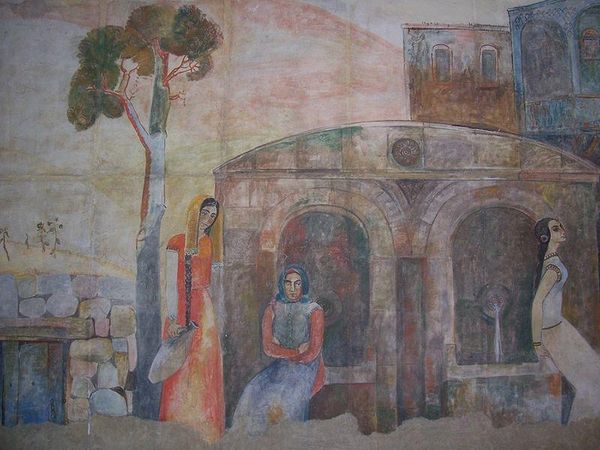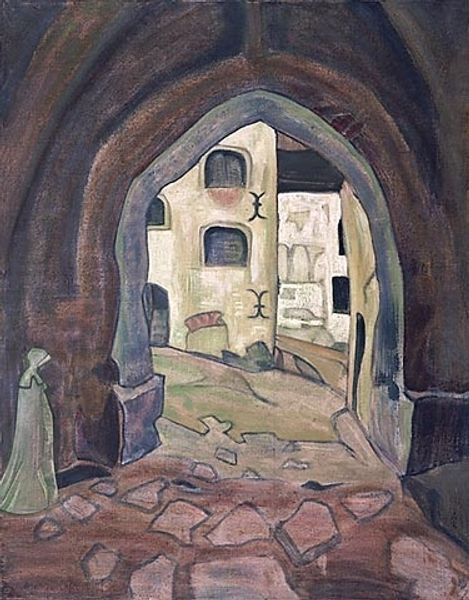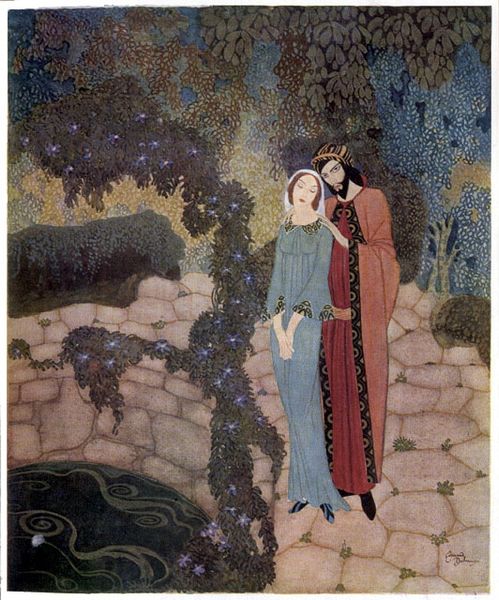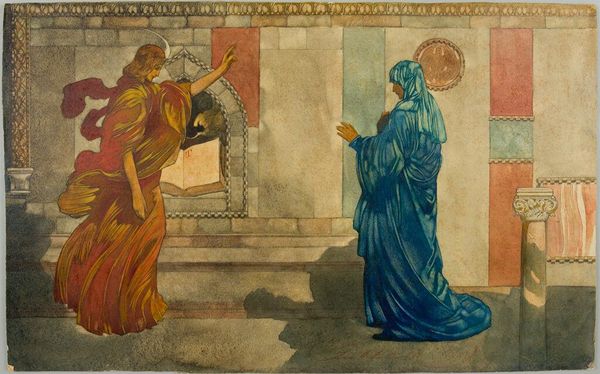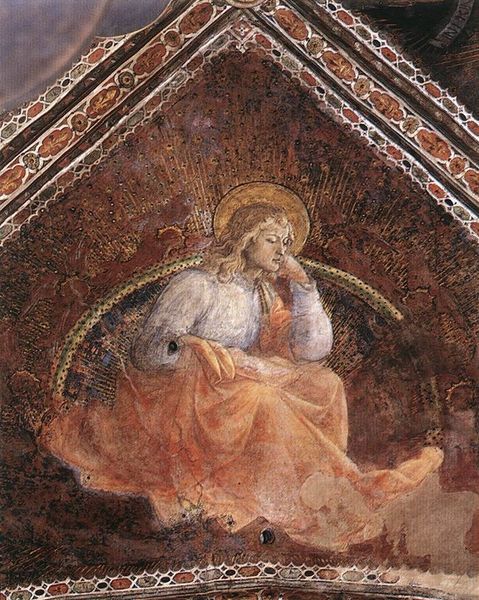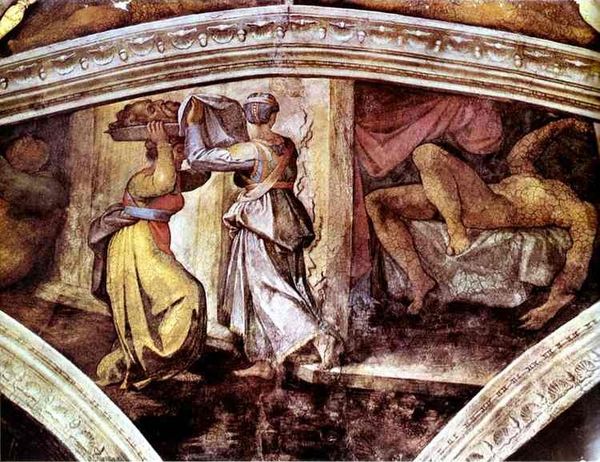
painting, oil-paint
#
portrait
#
painting
#
oil-paint
#
landscape
#
painted
#
oil painting
#
jesus-christ
#
expressionism
#
christianity
#
genre-painting
#
christ
Copyright: Public domain
Curator: Mikhail Nesterov's 1911 painting, "Christ with Martha and Mary," presents a contemplative scene executed in oil paint. Editor: My initial impression is one of stillness, almost a hushed reverence emanating from the canvas. The color palette, predominantly muted greens and blues, contributes to this atmosphere. Curator: Absolutely. Considering the socio-political context of pre-revolutionary Russia, Nesterov's turn to religious themes and an idealized past reflects a yearning for spiritual stability amidst growing unrest. The materials themselves, the oil paints, and the likely source of pigments, speak to an established artistic tradition he was both embracing and subtly challenging. Editor: I agree that he situates himself within tradition, but his expressive brushwork, particularly visible in the landscape, suggests a move away from strict academic realism. Note how the light delicately renders the figures of Christ, Mary, and Martha but then flattens against the building to create visual dynamism. The painting is essentially an exercise in juxtaposing textures to draw the eye in. Curator: I'd emphasize the placement and depiction of the figures themselves as products of their society. Christ, idealized but accessible, engages in a quiet discourse, contrasting with the implied labor traditionally assigned to Martha. Their clothing signifies their roles and status. Editor: I see how you interpret it as an exercise of social roles. From a purely formal perspective, that interaction creates a focal point within the composition. The delicate archway in the foreground leads us to the primary conversation that unifies form and content into a single narrative structure. Curator: That structure then creates tension within Russian society. Are they working in service or silently rejecting it? How is gender expressed, for whom, and who are the consumers and audience of this kind of piece? Editor: While your material considerations expose different questions of gender, consumerism, and socio-economic issues, I will instead observe its symbolic potential: light and shade in the formal rendering become vehicles to convey greater themes than mere aesthetic or market function. Curator: I can agree on one front; it has a lasting impact on many, and will for generations to come, because art, especially a piece like this, forces questions, even in viewers many generations removed from its inception. Editor: I believe you are right. Indeed, this work exemplifies how even seemingly traditional forms can invite continued formal and contextual examination.
Comments
No comments
Be the first to comment and join the conversation on the ultimate creative platform.
